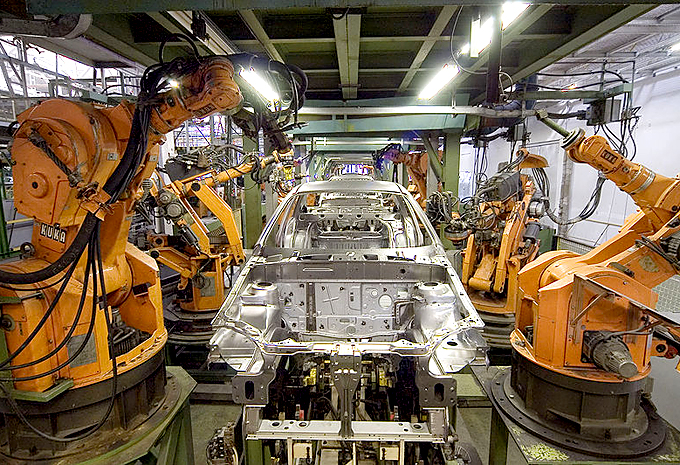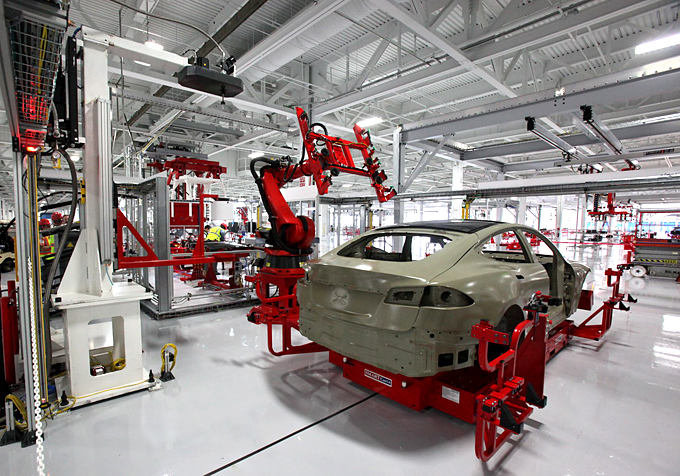words Al Woods
Automotive robots are simply computer programmed machines. The robots are scheduled to perform a series of complex actions automatically. The robots used in the car manufacturing industry differ in type. There is a variety of robotic applications used in automotive robots. The robots are either autonomous or semiautonomous.

Robotic Applications Used In Automotive Manufacturing
The car manufacturing industries are quick in adopting robotic technology. There are several types of robotic applications that are utilised in the automotive industry. The following forms are commonly used in automotive robots:
- Collaborative robots
- Robotic Painting
- Robotic welding
- Robotic assembly
- Material removal
- Part transfer and machine tending
Collaborative Robots
The collaborative robots consist of inbuilt robots which work together with other robots. Collaborative robots are commonly used in large assembly plants. The handling and welding automotive robots collaborate to ensure that the assembly lines function well.
Robotic Painting
Painting is a highly toxic job. The robotic painting is used to minimise risk in the car manufacturing industry. Robots do a perfect job especially painting of large areas. The painting is consistency, and it is done within a short time.
Robotic Welding
A car requires a lot of welding before it is completed. Welding involves high temperatures which expose workers to health risks. Robotic welding application has proven invaluable in the automotive sector over a long time. Robotic welding gives a well-finished product which appeals to the eye.
Robotic Assembly
Assembling of small components such as pumps and motors can be effectively done by the robotic assembly application. Robots can also be used to install the windshield and for wheel mounting.
Robotic Application for Material Removal
Automotive robots can be used in trimming and cutting during the process of material removal. The robots do a perfect job in the cutting of fabrics and trimming of plastics.
Machine Tending and Part Transfer
Some process in the automotive industry like transferring of metal stamps and pouring of molten metal is dangerous to be done by a human being. Automotive robots best do such operations.

Types of Automotive Robots
The common types of industrial robots are:
Articulated Robots
These are robots that consist of rotary joints. The joints are made up of two simple bolts to about ten or more joints. The arm of the robot is connected to a base which has a twisting joint to enhance the movement. Most of the automotive robots contain four to six joints.
Cartesian Robots
These are robots that consist of three joints. The joints use the Cartesian coordinates system of X, Y, and Z.
Cylindrical Robots
The cylindrical robots consist of one rotary joint at the base and another one that connects the links. The robot operates in a cylinder-shaped object.
The choice of the type of the robot depends on the use and space of the company.
The Nature of the Robots
Automotive robots can be autonomous or semiautonomous.
Autonomous Robots
Autonomous robots do not accept directions from outside forces or users. The robots intelligently perform the tasks they are programmed to do without outside influence. Autonomous robots are precise and complete almost error-free assignments.
The advantage of using autonomous robots is that once they are set, they do not require human input since they work independently. Automotive robots can be autonomous to reduce the interference of the processes.
Semiautonomous Robots
The semiautonomous robots, on the other hand, perform tasks and make intelligent decisions without direction. However, semiautonomous robots accept commands from users. An external control device can guide these robots.
The semiautonomous robots are ideal in the manufacturing industry because an outside force can be used to stop or start a process. The choice of the type of robot to use depends on the sensitivity of the tasks. Semiautonomous robots can be used to perform multiple functions with the required precision.







